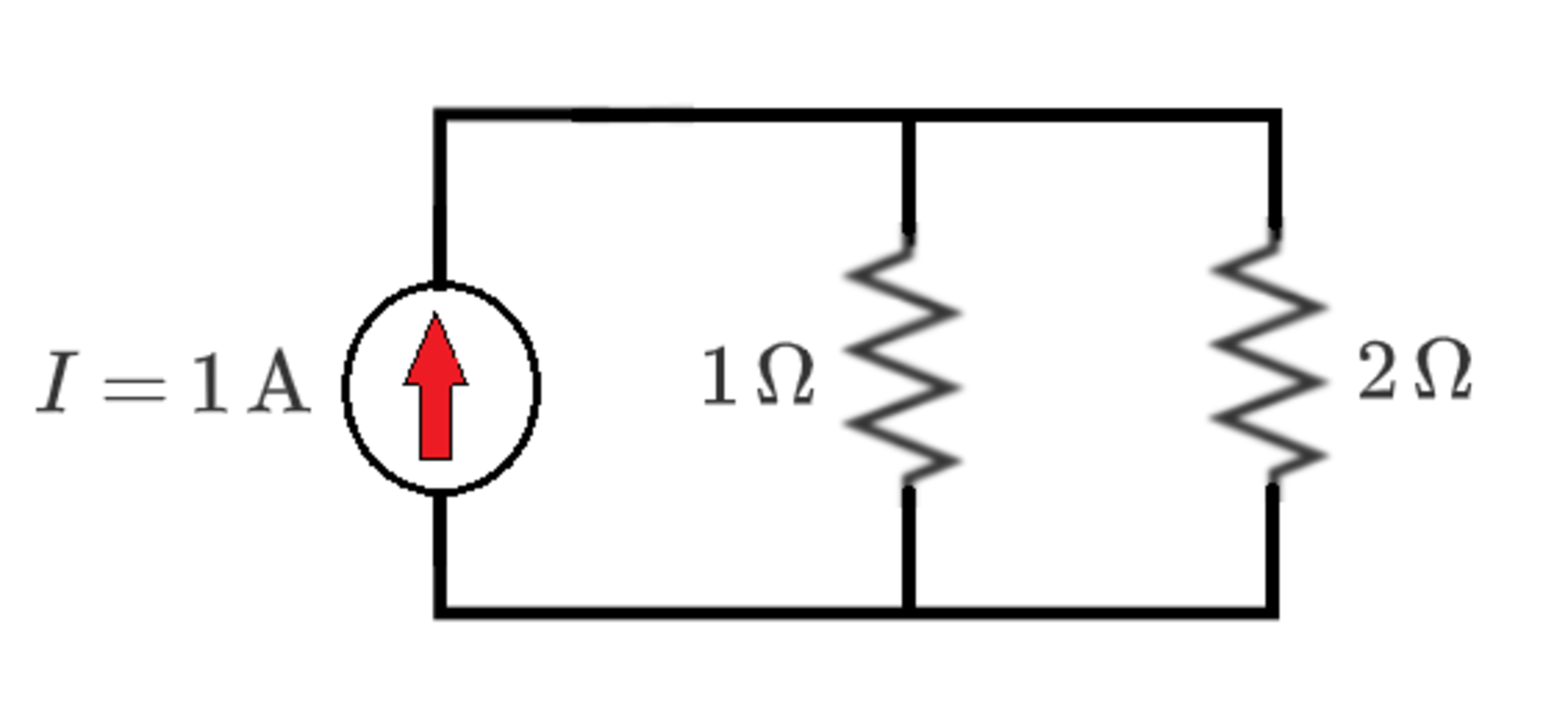Analog of "Least Action" for Circuits?
A 1-amp current source feeds a parallel set of resistors as shown below. Given that the two resistor currents must sum to equal the source current, how much current should flow in the resistor in order for the total power dissipated in the resistors to be minimized?
Note: Analyze the problem with the specified requirement in mind, rather than using known rules. How does this relate to real life?

The answer is 0.66666.
This section requires Javascript.
You are seeing this because something didn't load right. We suggest you, (a) try
refreshing the page, (b) enabling javascript if it is disabled on your browser and,
finally, (c)
loading the
non-javascript version of this page
. We're sorry about the hassle.
Dissipative power = i 2 r
i 2 ( 1 ) + ( 1 − i ) 2 ( 2 ) should be minimum.
Making the derivative = 0,
2 i − 2 ( 1 − i ) ( 2 ) = 0 → i = 3 2
It also makes sense to just find out what current would flow through each resistor irrespective of the power, since the parallel arrangement of resistors already accounts for the lowest power dissipation possible.
R 2 = 2 R 1
Thus, i 1 = 2 i 2 ; i 1 + i 2 = 1
i 1 = 0 . 6 6 7